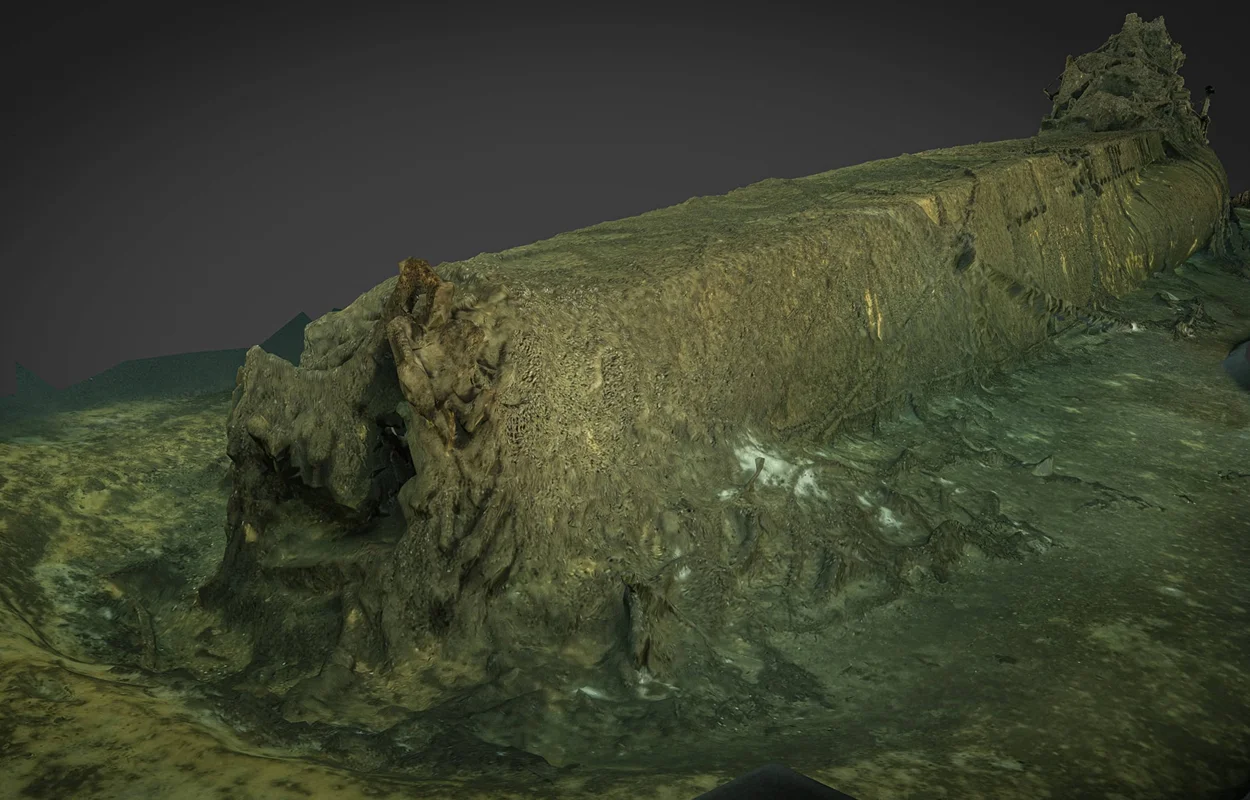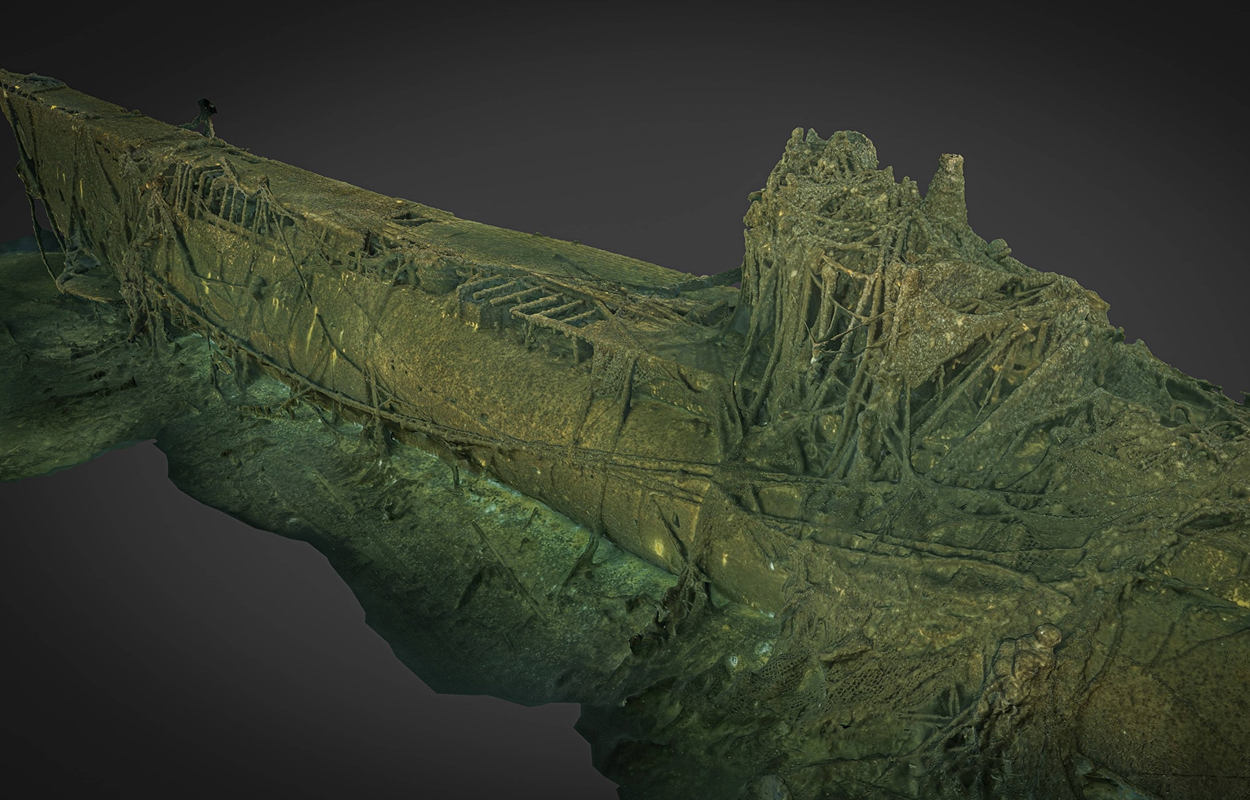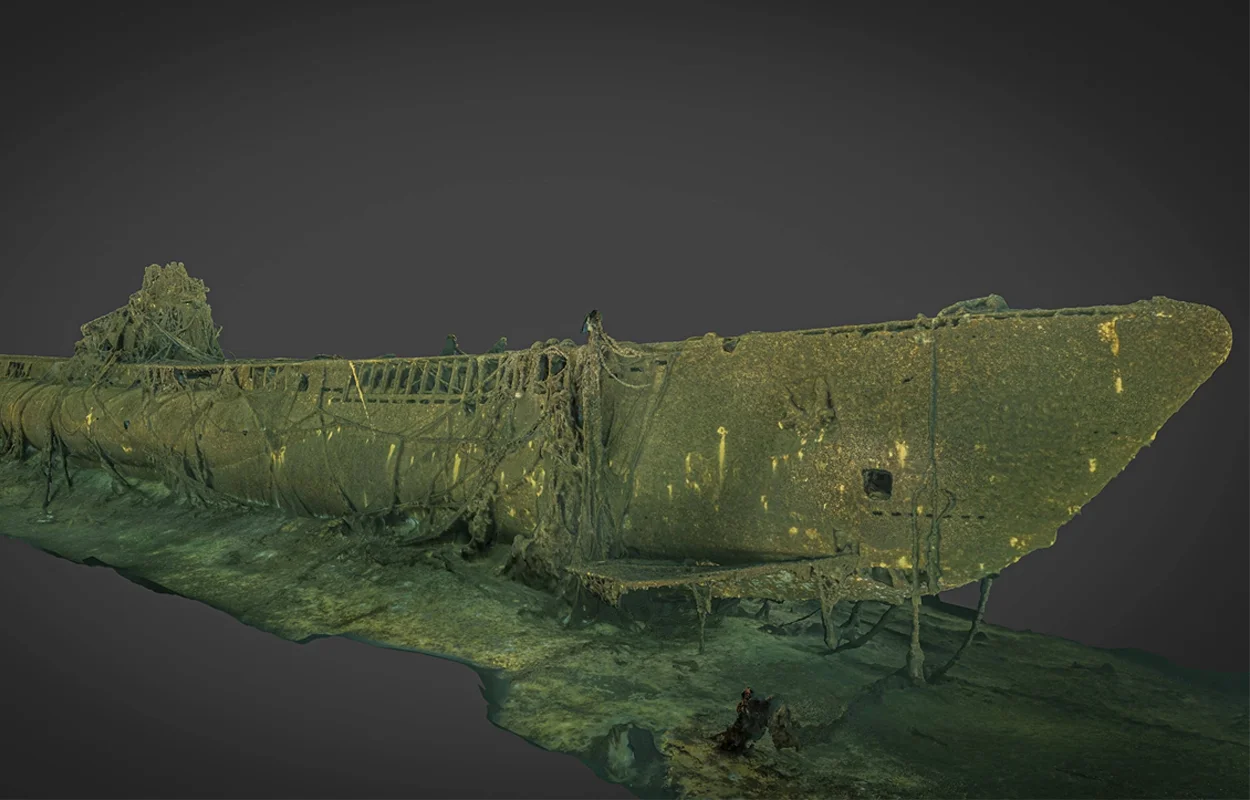An underwater study using 3D photogrammetry has revealed remarkable details of the U-670, a Type VIIC U-boat of Nazi Germany’s Kriegsmarine during World War II.
U-670 was laid down at the Howaldtswerke yard at Hamburg and launched in 1942 under the command of Oberleutnant zur See Guido Hyronimus.
With a displacement of 769 tonnes, the submarine had a total length of 67.10 metres and was powered by two Germaniawerft F46 four-stroke, six-cylinder supercharged diesel engines.
U-670 had a maximum depth of up to 230 metres and could operate for 80 nautical miles when submerged, and 8,500 nautical miles when surfaced.

In 1943, while on a training mission in the Baltic Sea, U-670 collided with the target ship Bolkoburg and sank, resulting in the loss of 21 crewmembers.
The wreckage of the submarine, first discovered in 2013, was officially identified in 2015 by divers from Baltictech at a depth of 80 metres near Hel, a narrow sandbar in northern Poland on the Baltic Sea.
During an underwater study conducted by Bartłomiej Pitala, a 3D photogrammetric scan was performed on the wreck site using almost 10,000 photographs, revealing remarkable details of the U-Boat.

3D photogrammetry is a technique for creating realistic 3D models. Instead of scanning an object with lasers or special sensors, it uses overlapping 2D images taken from different angles.
Software then analyses those photos, finds common points between them, and reconstructs a detailed 3D model with accurate shape, scale, and even surface texture.
“The forward torpedo loading hatch is open, the end piece of the stern is missing due to a collision, and the conning tower is covered in fishing nets. The scanning took 50 minutes of bottom time, with a total dive time exceeding 3 hours,” said Pitala.
Header Image Credit : Bartłomiej Pitala
Sources : Underwater3D





